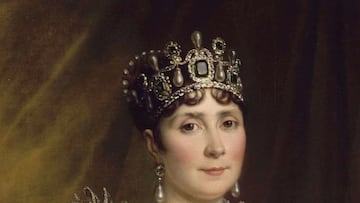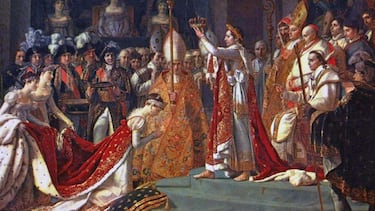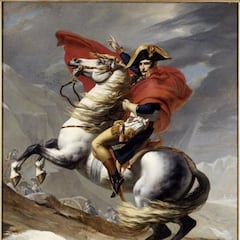Who was Joséphine Bonaparte and what happened to Napoleon’s first wife?
She was born on a Caribbean island, married twice and put her in prison during the Reign of Terror in the French Revolution. This is the story of a Creole who became empress.

She was born very far from Paris on the night of Saint John’s Eve, 1763, in Martinique, on an island in overseas France. There, among the sugary aromas of the Caribbean, watching the ships and the lives that were lost out at sea on the distant horizon, she spent the first years of her life. Her story would change after her first marriage - she left that tropical enclave to enter a complicated Europe that was about to change forever.
You might also enjoy
The story of Joséphine de Beauharnais is that of a Creole who became empress. She was slender, with a good figure, brown hair and brown eyes. She traveled to the French capital after marrying Alexander de Beauharnais, a liberal aristocrat who assumed an important political role during the French Revolution.
From their relationship, little Hortense de Beauharnais and little Eugène were born; The arrival of the former into the world was interpreted by Alejandro as clear evidence of his wife’s infidelity. After making her life impossible, it is Joséphine herself who requests a letter of legal separation from the monarch’s lawyer and forever drives away the ghosts that that relationship released. The limits of the ordeal that she was about to experience mark the beginning of her real journey.

After spending two years in Martinique, she returned to France and discovers that everything has changed. What historians would later call the Old Regime had ceased to exist. The Reign of Terror of the Revolution took Joséphine to prison where she spent three months behind bars. When she left her prison cell, she navigated a sea of economic hardship which she would eventually leave behind as she rubbed shoulders with the highest sectors of a society that sought freedom with guillotine blows. One day, between August and September 1795, while staying in the chambers of Madame Thérésa Tallien, with whom a friendship had blossomed while she was in prison, she met Napoleon...
She was 32 years old, while the general of Corsica was six years younger, at 26 but they had a lot in common. Both had been born on an island recently annexed to France that spread French speakers around the globe, both had had a kind mother and an irresponsible father. Their relationship has gone down in history as one of the most iconic royal links known to man. They were married civilly in March 1796, amid the rumors of a notary who kept whispering to her that that soldier was a poor man with no future other than the loyalty of the soldiers at his disposal.
“Do you still think I have nothing?”
Two days later, Napoleon entered Italy with that same army. During all his campaigns he did not stop writing letters to tell his beloved everything he saw in the exotic worlds he visited and the endless news that occurred on the battlefields. “You, whom nature has endowed with spirit, sweetness and beauty, the only one who can move and govern my heart, who knows so well the absolute empire that you exercise over it”, it is read in one of his epistles. Many of these texts have survived to this day.
But she didn’t feel the same. She did not write to him with the same frequency and she even confessed in writing to one of her friends that she was “in a state of indifference.” As the days passed she felt more and more attracted to him. that man of military success, a bubble that burst when he was caught with a woman in bed. They weathered the difficulties of their marriage and, after reconciling, the coronation arrived.

Napoleon was forging an empire that had turned the Old Continent into a French octopus whose tentacles extended to all parts of its geography. And there, in the cathedral of Notre-Dame, evoking the figure of Charlemagne, he was crowned as emperor and she as empress. With the crown of golden laurels on her head she called the notary and whispered to him a question: “Do you still think I have nothing?”
The problem of leaving Europe as an inheritance
Related stories
Their marriage would soon entered a completely different phase. He was dealing with the complications of bridging a boiling continent while she dedicated her days to theater performances, reading, and spending idle hours in a castle full of extravagances that ranged from mummies to Romanesque paintings. Memories of the voyages that her husband had been on. And so the years to come passed, in peaceful calm until Napoleon decided to put an end to the nuptials after suspecting that he would not have an heir to leave his European conquests.
He married Archduchess Marie Louise of Austria, with whom he fathered Napoleon II in 1811. Fate was mischievous. His son died young and was barely able to reign for two weeks. After a turbulent period of abdications and difficulties on the French throne, where popular will, imperial ambitions and the last blows were intertwined of the Bourbon dynasty in Gallic lands, the crown went to the son of Joseph I, brother of Napoleon I, who, in a turn of historical events, had married Hortense de Beauharnais. That was how Napoleon III, the country’s first president, the last French king and the last French emperor, came to the throne - Joséphine’s grandson.

